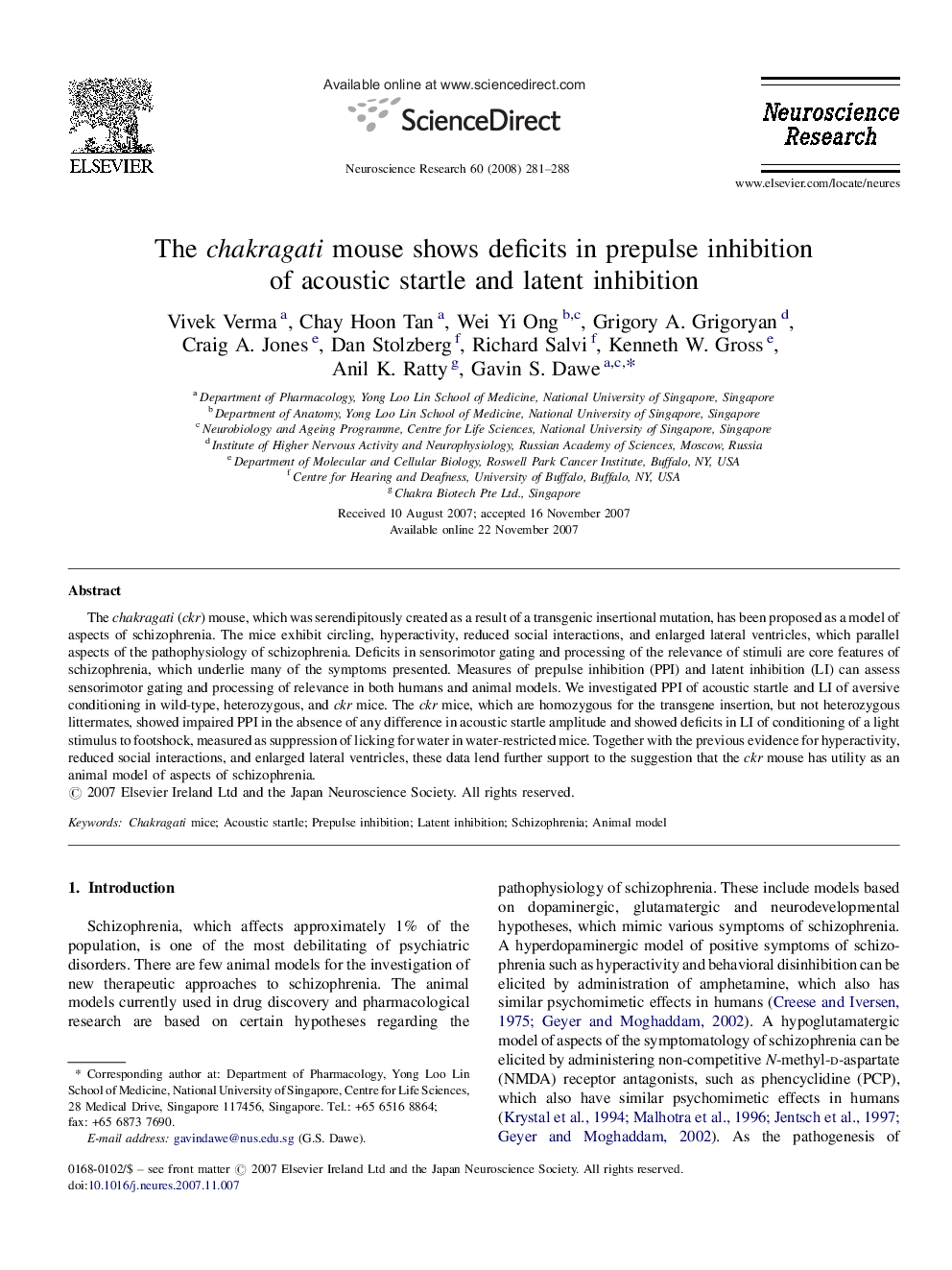| Article ID | Journal | Published Year | Pages | File Type |
|---|---|---|---|---|
| 4352656 | Neuroscience Research | 2008 | 8 Pages |
The chakragati (ckr) mouse, which was serendipitously created as a result of a transgenic insertional mutation, has been proposed as a model of aspects of schizophrenia. The mice exhibit circling, hyperactivity, reduced social interactions, and enlarged lateral ventricles, which parallel aspects of the pathophysiology of schizophrenia. Deficits in sensorimotor gating and processing of the relevance of stimuli are core features of schizophrenia, which underlie many of the symptoms presented. Measures of prepulse inhibition (PPI) and latent inhibition (LI) can assess sensorimotor gating and processing of relevance in both humans and animal models. We investigated PPI of acoustic startle and LI of aversive conditioning in wild-type, heterozygous, and ckr mice. The ckr mice, which are homozygous for the transgene insertion, but not heterozygous littermates, showed impaired PPI in the absence of any difference in acoustic startle amplitude and showed deficits in LI of conditioning of a light stimulus to footshock, measured as suppression of licking for water in water-restricted mice. Together with the previous evidence for hyperactivity, reduced social interactions, and enlarged lateral ventricles, these data lend further support to the suggestion that the ckr mouse has utility as an animal model of aspects of schizophrenia.
